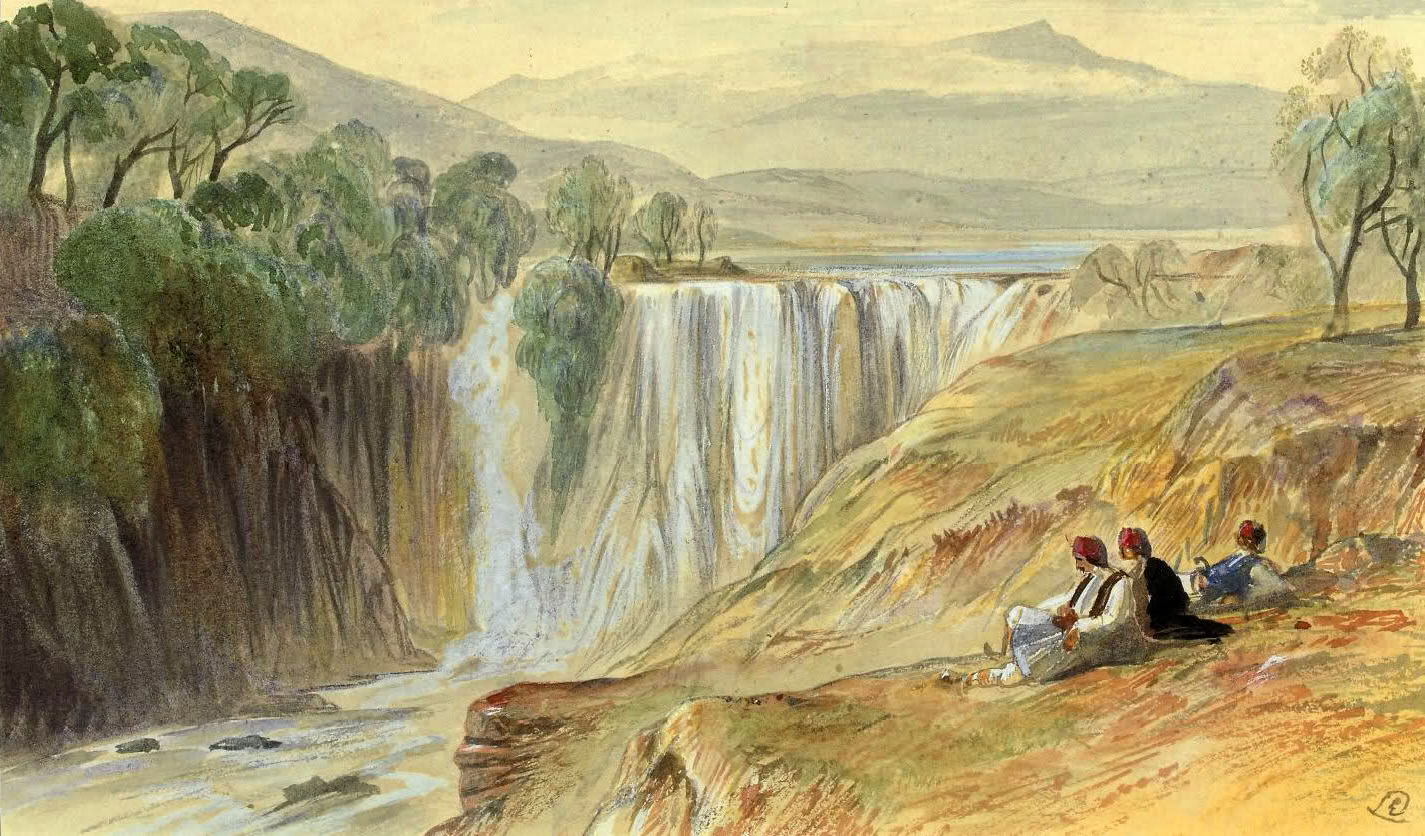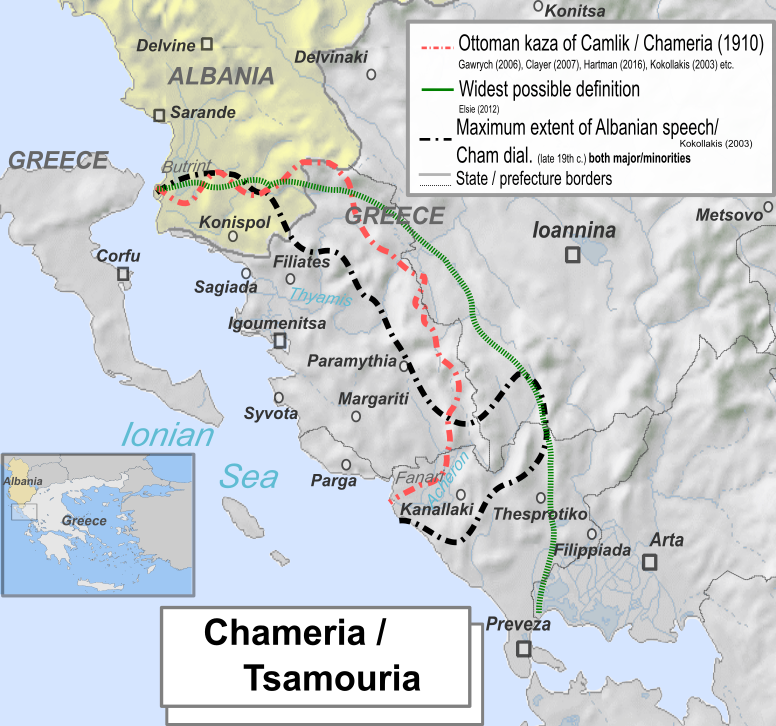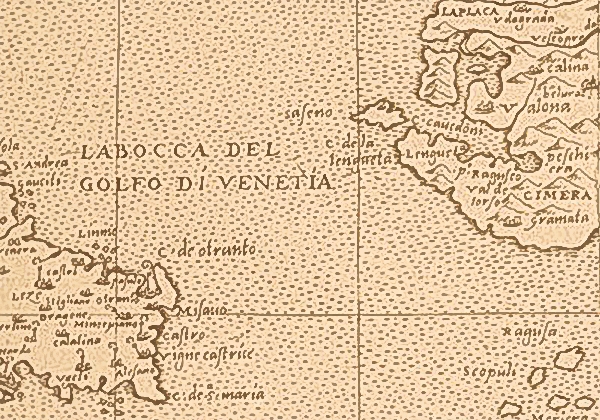|
Qamil Çami
Qamil Izet Çami (January 4, 1875 – September 26, 1933) was an Albanian rilindas, poet, and teacher. He and other rilindas from his area opened the first Albanian-language school of Filiates in 1908 . Life Qami Çami was born in Filiates, then a town of the Ottoman empire on January 4, 1875. In his youth he became a member of the literary club of Albanian students of Ioannina. After graduating in Istanbul he was appointed minor prefect of Sagiada in 1905. In 1907 also starting working as a teacher in the Ottoman school of his town, Filiates and taught written Albanian secretly. On August 25, 1908 along with other rilindas opened the first Albanian-language school of Filiates and became its headmaster. The funds were provided by the people of Filiates, such as Musa Demi, rilindas of the area and by other notable Cham Albanians like Rasih Dino, son of Abedin Dino. During the Balkan Wars, he was imprisoned in Ioannina by the Greek army. He managed to escape after 10 months and went ... [...More Info...] [...Related Items...] OR: [Wikipedia] [Google] [Baidu] |
Filiates
Filiates ( el, Φιλιάτες; ) is a town and a municipality in Thesprotia, Greece. It is located in the northernmost part of the regional unit, bordering western Ioannina regional unit and southern Albania. Name The region of Filiates was known as Cestrine prior to the Ottoman period. The region is named for the ancient town of Cestria, in ancient Epirus, other ancient names for which were Cammania, Ilion, Epirus, Troy, Epirus and Troia and Epirusis; the site of ancient Cestria is probably over the Albanian frontier. The modern name Filiates is the result of the conversion of a surname. According to Eqrem Çabej, Idriz Ajeti and Ali Dhrimo, it contains the Albanian suffix -at, widely used to form toponyms from personal names and surnames. According to Konstantinos Giakoumis, it applies to a certain ''Filios'' with the addition of the Greek ending -άτες or -άταις. Filiates is known as Filat in Albanian, "Filiates (alb. Filat)" and as Filat in Ottoman Turkish. "Filat" ... [...More Info...] [...Related Items...] OR: [Wikipedia] [Google] [Baidu] |
Balkan Wars
The Balkan Wars refers to a series of two conflicts that took place in the Balkan States in 1912 and 1913. In the First Balkan War, the four Balkan States of Greece, Serbia, Montenegro and Bulgaria declared war upon the Ottoman Empire and defeated it, in the process stripping the Ottomans of its European provinces, leaving only Eastern Thrace under the Ottoman Empire's control. In the Second Balkan War, Bulgaria fought against the other four original combatants of the first war. It also faced an attack from Romania from the north. The Ottoman Empire lost the bulk of its territory in Europe. Although not involved as a combatant, Austria-Hungary became relatively weaker as a much enlarged Serbia pushed for union of the South Slavic peoples. The war set the stage for the Balkan crisis of 1914 and thus served as a "prelude to the First World War". By the early 20th century, Bulgaria, Greece, Montenegro and Serbia had achieved independence from the Ottoman Empire, but large eleme ... [...More Info...] [...Related Items...] OR: [Wikipedia] [Google] [Baidu] |
Albanian National Revival
The Albanian National Awakening ( sq, Rilindja or ), commonly known as the Albanian Renaissance or Albanian Revival, is a period throughout the 19th and 20th century of a cultural, political and social movement in the Albanian history where the Albanian people gathered strength to establish an independent cultural and political life as well as the country of Albania. Prior to the rise of nationalism, Albania remained under the rule of the Ottoman Empire for almost five centuries and the Ottoman authorities suppressed any expression of national unity or national conscience by the Albanian people. There is some debate among experts regarding when the Albanian nationalist movement should be considered to have started. Some sources attribute its origins to the revolts against centralisation in the 1830s, others to the publication of the first attempt by Naum Veqilharxhi at a standardized alphabet for Albanian in 1844,Zhelyazkova, Antonina (2000). "Albanian Identities". Sofia: ... [...More Info...] [...Related Items...] OR: [Wikipedia] [Google] [Baidu] |
Paramythia
Paramythia ( el, Παραμυθιά) is a town and a former municipality in Thesprotia, Epirus (region), Epirus, Greece. Since the 2011 local government reform it is part of the municipality Souli, of which it is the seat and a municipal unit. The municipal unit has an area of 342.197 km2. The town's population is 2,730 as of the 2011 census. Paramythia acts as a regional hub for several small villages in the Valley of Paramythia and features shops, schools, a gym, a stadium and a medical center. Primary aspects of the economy are agriculture and trade. The town is built on the slopes of Mount Gorilla and overlooks the valley, below. The Castle of Paramythia was built on a hill in one of the highest points of the town during the Byzantine Empire, Byzantine period and today is open to tourists. The modern Egnatia Odos (modern road), Egnatia Highway which links Igoumenitsa with Ioannina, goes through the valley, north of the town of Paramythia. Name During the Byzantine and m ... [...More Info...] [...Related Items...] OR: [Wikipedia] [Google] [Baidu] |
Çamëria
Chameria ( sq, Çamëria; el, Τσαμουριά, ''Tsamouriá''; tr, Çamlık) is a term used today mostly by Albanians to refer to parts of the coastal region of Epirus in southern Albania and Greece, traditionally associated with the Albanian ethnic subgroup of the Chams.Elsie, Robert and Bejtullah D. Destani (2012). ''The Cham Albanians of Greece: A Documentary History''. IB Tauris. . p. XXIX. "Chameria is a mountainous region of the southwestern Balkan Peninsula that now straddles the Greek-Albanian border. Most of Chameria is in the Greek Province of Epirus, corresponding largely to the prefectures of Thesprotia and Preveza, but it also includes the southernmost part of Albania, the area around Konispol. It is approximately 10,000 square kilometres in size and has a current, mostly Greek-speaking population of about 150,000. As an historical region, Chameria, also spelled Chamuria, Chamouria or Tsiamouria, is sometimes confused with Epirus which is in fact a much larger ar ... [...More Info...] [...Related Items...] OR: [Wikipedia] [Google] [Baidu] |
Thesprotia
Thesprotia (; el, Θεσπρωτία, ) is one of the regional units of Greece. It is part of the Epirus region. Its capital and largest town is Igoumenitsa. Thesprotia is named after the Thesprotians, an ancient Greek tribe that inhabited the region in antiquity. History Thesprotia was part of the proto-Greek region in the late Bronze Age in which Greek archaic toponyms are were densely found. In antiquity, the territory of modern Thesprotia was inhabited by the ancient Greek tribe of Thesprotians and was bordered by the neighboring regions of Molossia to the north and Chaonia to the east. Thesprotia was part of the Epirote League before it was annexed by Rome where it became part of the Roman province of Epirus. After the fragmentation of the Roman Empire into East and West, it was part of the Eastern Roman (Byzantine) Empire until the late Middle Ages, except for a period of Bulgarian rule in the 9th-11th centuries. In c. 1430 it fell to the Ottomans. From the 8th-9th unti ... [...More Info...] [...Related Items...] OR: [Wikipedia] [Google] [Baidu] |
Cham Albanian
Cham Albanians or Chams ( sq, Çamë; el, Τσάμηδες, ''Tsámidhes''), are a sub-group of Albanians who originally resided in the western part of the region of Epirus in northwestern Greece, an area known among Albanians as Chameria. The Chams have their own particular cultural identity, which is a mixture of Albanian and Greek influences as well as many specifically Cham elements.See Hasluk, 'Christianity and Islam under the Sultans', London, 1927. A number of Chams contributed to the Albanian National Awakening, Albanian national identity and played an important role in starting the renaissance of the Albanian culture in the 19th century. The Chams speak their own Albanian dialects, dialect of the Albanian language, the Cham Albanian dialect, which is a Southern Tosk Albanian dialect and one of the two most conservative ones; the other being Arvanitika. During the late 1930s Chams suffered from intimidation and persecution under the dictatorship of General Ioannis Meta ... [...More Info...] [...Related Items...] OR: [Wikipedia] [Google] [Baidu] |
Konispol
Konispol ( sq-definite, Konispoli) is the southernmost town in Albania. It sits one kilometer away from the Border crossings of Albania, Albanian-Greek border. The settlement is inhabited by Muslim Cham Albanians. Konispol is the modern centre of the Cham Albanian community in Albania. The main economic interests of Konispol are agriculture and viticulture. The town is the seat of the southernmost administrative unit in Albania, the Municipality of Konispol ( sq, Bashkia Konispol). It was formed during the 2015 local government reform by the merger of the former municipalities of Konispol, Markat and Xarrë. The total population is 8,245 (2011 census), in a total area of 226.26 km2. The population of the former Konispol municipality at the 2011 census was 2,123. The former Konispol municipal unit (pre-2015) consisted of the town Konispol and the village Çiflik. The new larger municipality of Konispol contains settlements that are inhabited by Albanians who form the majority ... [...More Info...] [...Related Items...] OR: [Wikipedia] [Google] [Baidu] |
Jani Minga
Jani Minga (1 August 1872 – 7 May 1947) was a patriot Albanian teacher and a notable follower of the National Renaissance of Albania. He was one of the signatories of Albanian Declaration of Independence. Life Minga was born in Shënpjetër village, today's Fier, Albania, on August 1, 1872. His father Konstandin was an activist for education in Albanian, while his mother Ana was a descendant of Topia family of Berat. He finished the elementary school in Berat, and the high school in Qestorat, having Koto Hoxhi as a teacher. He studied and graduated later for Philology in the University of Athens. Minga knew Old and New Greek, Latin, Italian, and French. After finishing the studies he moved to Vlorë. Minga took part in every congress on the Albanian that took place before the declaration of independence, most notably the Congress of Monastir, where the Albanian alphabet was established. He initiated the association "Labëria" in 1889 and opened the first Albanian-language school ... [...More Info...] [...Related Items...] OR: [Wikipedia] [Google] [Baidu] |
Vlora War
The Vlora War or the War of 1920 ( sq, Lufta e Vlorës or ''Lufta e Njëzetës''; it, Guerra di Valona) was a series of battles between Italian forces garrisoned throughout the Vlorë region of Albania (an Italian protectorate) and Albanian nationalists, who were divided into small groups of fighters.Albanian identities: myth and history Authors Stephanie Schwandner-Sievers, Bernd Jürgen Fischer Editors Stephanie Schwandner-Sievers, Bernd Jürgen Fischer Edition illustrated Publisher C. Hurst & Co. Publishers, 2002 , The war lasted three months until an armistice; it had great impact in the struggle of Albania for the safeguard of its territories while Albanian borders and future were discussed in the Paris Peace Conference. The Vlora War is seen as a turning point in the establishment of Albanian independence. Background Before entering the First World War as an ally of Triple Entente the Kingdom of Italy had signed the secret Treaty of London: Italy promised to declare war ... [...More Info...] [...Related Items...] OR: [Wikipedia] [Google] [Baidu] |
Sazan
Sazan ( sq-definite, Sazani) is an Albania, Albanian uninhabited island in the Mediterranean Sea. The Islands of Albania, largest of Albania's islands, it is a designated military exclusion zone; it lies in a strategically important location between the Strait of Otranto and the mouth of the Bay of Vlorë, marking the border between the Adriatic Sea, Adriatic and Ionian seas. The island has a surface area of . It is long and wide, and its coastline measures about . In 2010, of the island's surrounding marine area was designated as the Karaburun-Sazan National Marine Park, Karaburun-Sazan Marine Park. In clear weather, Sazan is sometimes visible from the coast of Salento, Italy, to its west. The island has been open to the public since July 2015. History Sazon was known as ''Sason'' (Σάσων) to the ancient Greeks, and ''Saso'' to the ancient Romans. Pseudo Scylax mentioned it in the Periplus of Pseudo-Scylax, Periplus. And Polybius wrote that there had been a military ... [...More Info...] [...Related Items...] OR: [Wikipedia] [Google] [Baidu] |
Italian Army
"The safeguard of the republic shall be the supreme law" , colors = , colors_labels = , march = ''Parata d'Eroi'' ("Heroes's parade") by Francesco Pellegrino, ''4 Maggio'' (May 4) by Fulvio Creux , mascot = , equipment = , equipment_label = , battles = RisorgimentoWar of 1866 Italo-Ethiopian War of 1887–1889Mahdist WarFirst Italo-Abyssinian WarBoxer RebellionItalo-Turkish WarWorld War I Second Italo-Abyssinian WarSpanish Civil WarItalian invasion of AlbaniaWorld War IIGulf WarKosovo War1999 East Timorese crisisGlobal War on Terrorism *Iraq War *War in Afghanistan , anniversaries = 4 November, National Unity and Armed Forces Day 4 May, Army Day , decorations = 3 Cavalier Crosses of the Military Order of Italy 1 Gold Medal of Military Valor 2 Gold Medals of Civil Valor 1 Silver Medal of Civil Valo ... [...More Info...] [...Related Items...] OR: [Wikipedia] [Google] [Baidu] |







